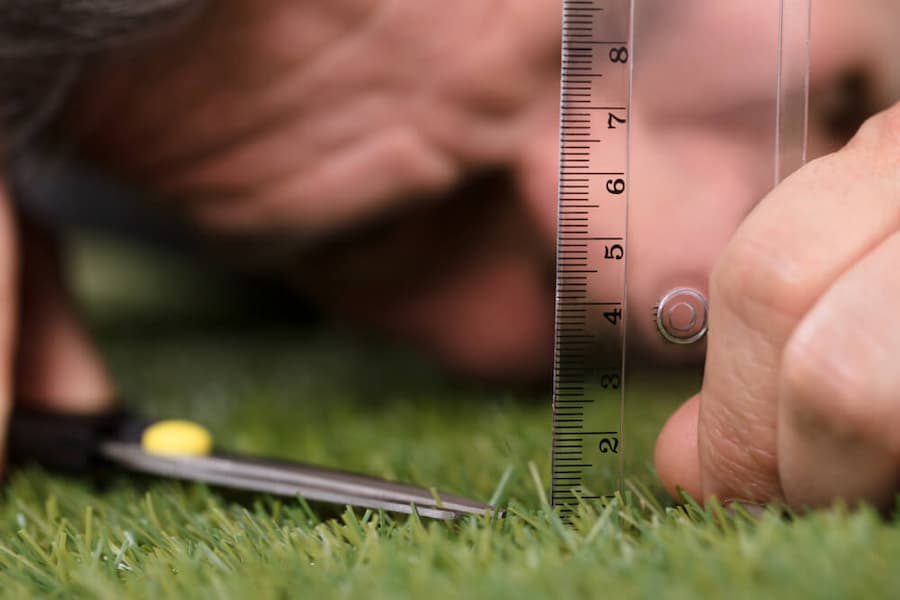Table of contents:
What is Obsessive Compulsive Disorder (OCD)
Obsessive-compulsive disorder is a subtype of anxiety. OCD is a combination of two terms: obsession and compulsion.
Obsessions are repetitive, intrusive, and unwanted triggering thoughts that are beyond a person’s control. Compulsions are the acts that a person does in an attempt to get rid of that obsession. Thus, OCD is an urge to do something over and over again.
Not every thought should be considered an obsession. In order to make a diagnosis of OCD, the vicious cycle should be so extreme that it disturbs a person’s life and consumes a lot of daily time on simple tasks such as repeatedly washing hands.
Research and statistics show that only 1.1-1.8 percent of people in the world have OCD. OCD is different from an obsessive compulsive personality disorder (OCPD), in which a person requires extreme orderliness, neatness, perfection, and control over things including relationships and other components of everyday life.

Types of Obsessive Compulsive Disorders
While there are many types of obsessions and compulsions, there are four major types of obsessive-compulsive disorders.
1. Intrusive Thoughts and Ruminations
OBSESSIONS | COMPULSIONS |
Violent thoughts of harming someone | Doing harm to someone / Avoiding this possibility |
Violent sexual thoughts | Doing sexual harm to someone / Avoiding this possibility |
Thoughts about blasphemy | Participating in blasphemy |
Unrealistic intrusive thoughts | Carrying out those intrusive thoughts |
Excessively ruminating about life after death | Visualizing every scenario in detail by taking more time than an average philosopher |
2. Checking
OBSESSIONS | COMPULSIONS |
Thoughts about the house catching on fire | Repeatedly checking the kitchen stove |
Thoughts about loved ones being harmed | Checking on family members repeatedly |
Fear of burglary | Checking door locks again and again |
Thoughts of losing a job | Checking boss’s email again and again |
3. Contamination or Mental contamination
OBSESSIONS | COMPULSIONS |
Fear of getting germs from other objects or people. | No handshakes. Excessive washing of the hands. |
4. Symmetry or orderliness
OBSESSIONS | COMPULSIONS |
Needing items to be in perfect symmetry | Arranging items repeatedly |
Feeling the house is constantly dirty | Cleaning the house constantly |
Causes of Obsessive Compulsive Disorder
There are no exact causes of obsessive-compulsive disorder. It can occur in any age group. There are certain risk factors that are the causes of obsessive-compulsive disorder (OCD).
Risk Factors
Some of the risk factors are shown below:
How are OCD Disorders Diagnosed
OCD is diagnosed by an interview with a trained professional psychiatrist. Research shows everyone in this world can have some sort of OCD, but it is most troublesome when it disturbs daily life. The psychiatrist is looking for the following when diagnosing OCD:
If the answers point towards obsession and compulsion, OCD can be a diagnosis.
Symptoms and Signs of OCD
Some of the signs and symptoms of OCD are as follows:
Physical Symptoms
The physical obsessive-compulsive disorder OCD symptoms can include:
Psychological Symptoms
Psychological signs of obsessive compulsive disorder can include:
Behavioral Symptoms
Behavioral obsessive-compulsive disorder OCD symptoms can include:
Treatment Options for OCD
It is important to get help and treatment if someone has OCD. OCD is an irritating disorder that impairs a person’s life. OCD can be managed medically and psychologically by a multi-professional, integrated team of psychiatrists in a clinics such VipVorobjev. The individual will attend outpatient or inpatient treatment depending on the severity of the OCD.
Medical Treatment
Medication treatment for obsessive-compulsive disorder helps 40-70 percent of the patients. Some of the best and most effective are antidepressants include:
Psychotherapy
Psychotherapy treatment for obsessive compulsive disorder includes:
Inpatient Treatment vs. Outpatient Treatment
Treatment for obsessive-compulsive disorder can be done in the outpatient or inpatient departments of a clinic depending upon the severity of the disorder. Outpatient and inpatient departments have the following differences:
| Outpatient OCD treatment | Inpatient OCD treatment |
| The patient is not admitted to the hospital. | The patient has to be admitted to the hospital. |
| Treatment is between 8 A.M. to 2 P.M. | Treatment is 24-7. |
| After 2 p.m., the patient can go home. | The patient must remain under constant supervision by the specialists. |
| The patient can do his daily work after 2 p.m. | The patient remains focused on treatment. |
| The patient has freedom, so he/she is mentally satisfied. | The patient gets full attention to the treatment and has higher success rates. |
| The patient can enjoy the company of good friends. | The patient can avoid anxiety from bad friends. |
| The patient can enjoy family therapy. | The patient can avoid family stress that triggers symptoms. |
| The cost of treatment is less than inpatient. | The cost of treatment is slightly higher than outpatient. |
| The person can do a job to earn money. | The patient is guided to adopt a tension-free career. |
Process and Stages of OCD Treatment in VipVorobjev Clinic
Treatment for obsessive-compulsive disorder cannot be done at once; rather, there are stages and processes that are followed to get rid of this disease. VipVorobjev is one of the best and most effective OCD disorder treatment centers in the world. The processes and stages are as follows:
1. History and interview of the patient The previous history of the patient is taken to discuss other illnesses, disorders, or history of OCD in the family.
2. Diagnosis of OCD OCD is diagnosed after concluding the interviews with the patient. The patient and specialist will discuss family history and various signs and symptoms.
3. Psychotherapy sessions and medications After diagnosis, the next step is the treatment for obsessive-compulsive disorder, starting with cognitive behavioral therapy and medications.
4. Post-Treatment sessions and follow-up The patient is checked for any remaining symptoms after treatment in the most effective and best treatment center, which is VipVorobjev.
Is it Possible to Get Rid of OCD on Your Own
Yes, but recovering from OCD on your own is not an easy task. Here are some tips that users can follow to get rid of this vicious loop:
Average Duration of Treatment for Obsessive-Compulsive Disorder
The average duration of OCD treatment varies from person to person depending on the severity of the disorder, time duration, and the person’s willpower. On average, it takes 2-12 months with medicine, exposure and response prevention, and cognitive behavioral therapy.
Effectiveness of Obsessive-Compulsive Disorder Treatment
The effectiveness of the OCD disorder treatment depends on the following:
If these things are improving with time, treatment is on the right track and is effective for OCD.
Cost of OCD Treatment
The cost of OCD treatment depends on the following:
Doctors
Treatment for obsessive-compulsive disorder depends on the doctors or clinicians that are treating the patient. VipVorobjev Clinic has the best doctors from all over the world. The clinic has:
Patents and Certificates
The VipVorobjev Clinic is a DAACC certified facility (Drug, Alcohol, and Addiction Counselor certification). We offer the top psychiatrists who can help you break the cycle of anxiety with the best care. The list below includes a few of the certificates:

